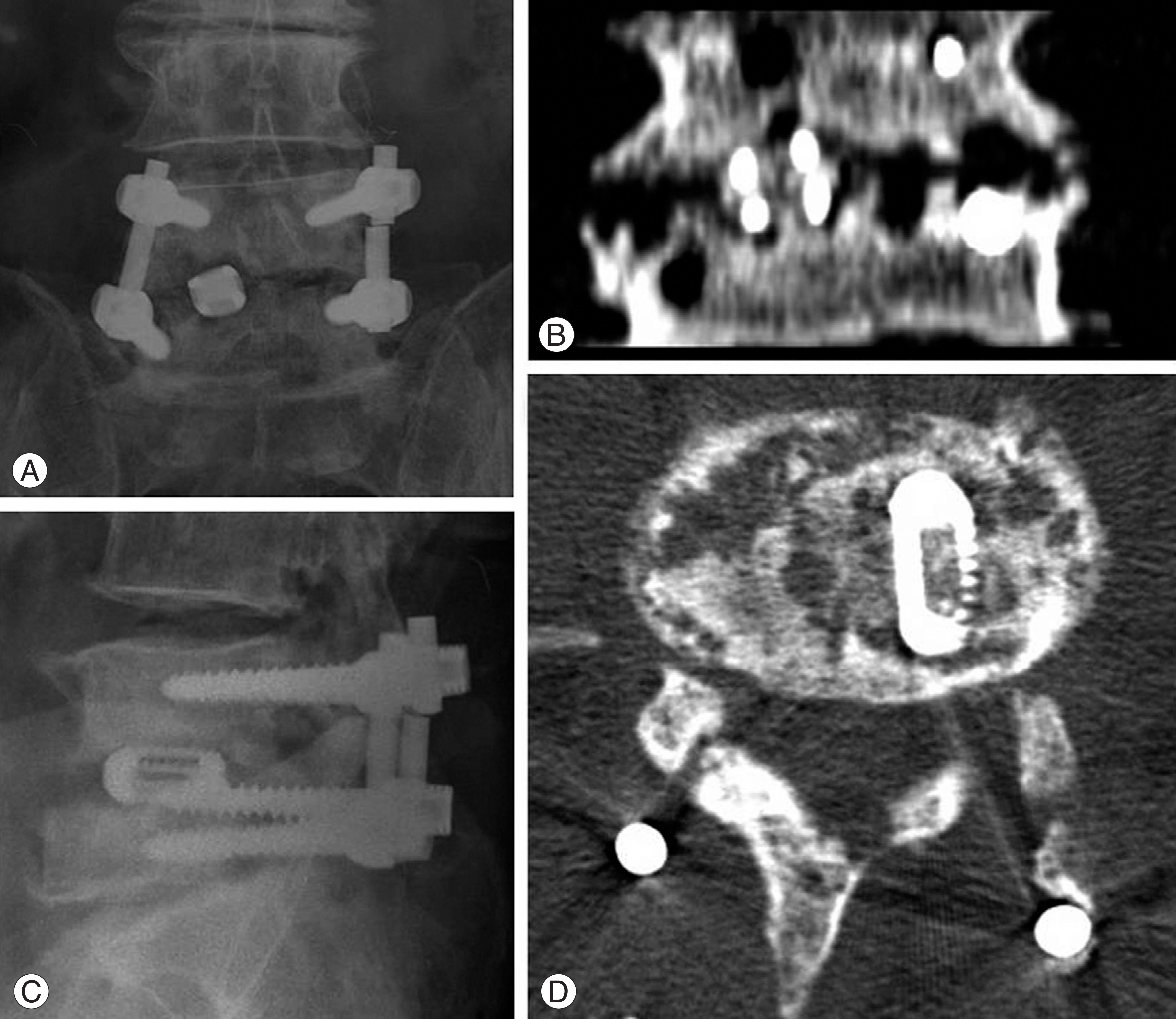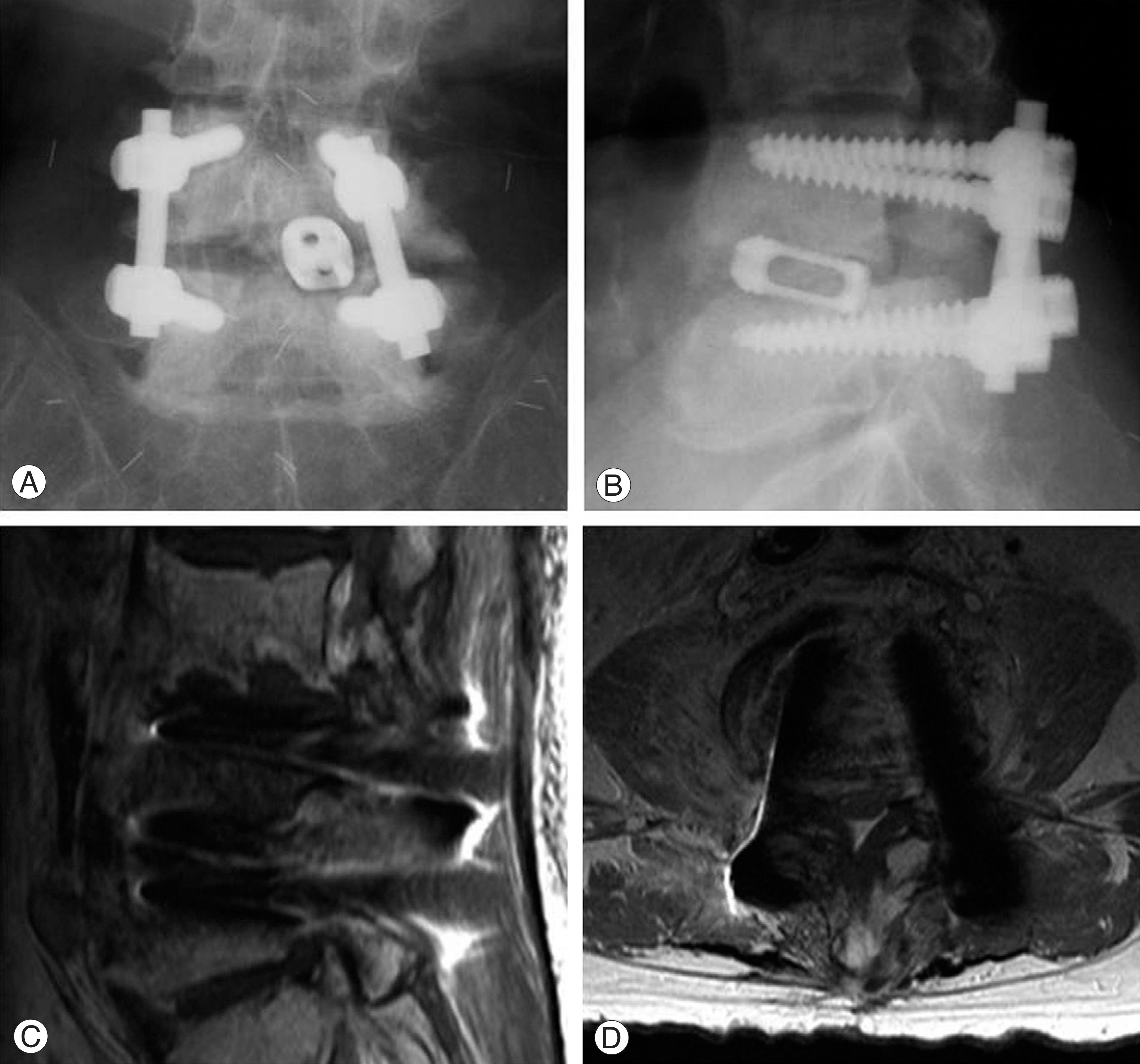J Korean Soc Spine Surg.
2009 Dec;16(4):274-284. 10.4184/jkss.2009.16.4.274.
Precautions Against Infection Following Posterior Spinal Fusion Based on Types of Infection and Risk Factors
- Affiliations
-
- 1Department of Orthopedic Surgery, Seoul Sacred Heart General Hospital, Seoul, Korea. niceosu@freechal.com
- KMID: 1819809
- DOI: http://doi.org/10.4184/jkss.2009.16.4.274
Abstract
-
STUDY DESIGN: This is a retrospective preparative study and prospective study
OBJECTIVE
We instituted and verified the precautions against postoperative spinal infection. SUMMARY OF THE LITERATURE REVIEW: Postoperative infection comes from contamination during the operation and various strategies have been recommended to prevent it.
MATERIALS AND METHODS
583 cases that underwent instrumented posterior spinal fusion during two years (group I), were reviewed to discover the risk factors, and intraoperative cultures were done to detect the contamination routes and the causative microorganisms for the next 4 months. Six precautions, based on the results, were instituted. We analyzed 354 cases that underwent operation in the following year (group II) using the precautions.
RESULTS
Twenty cases (3.4%) were infected in group I and the types of infection were superficial wound infection (4 cases), deep wound infection (4 cases), osteomyelitis around the interbody space (7 cases), osteomyelitis around the pedicle screws (4 cases) and a combination of wound infection and osteomyelitis around the pedicle screws (1 case). Infections happened more frequently in the cases of interbody fusion (p=0.034), revision (p=0.087) and those done in the summer season (p=0.025). S. epidermidis, as the causative bacteria, was cultured from both the operation environments and wounds. Six precautions based on the preliminary results were instituted as follows; irrigation method reformation, delayed opening of instruments, turning-off local air conditioners, changing of gowns before instrumentation, local bone irrigation and limited indications for interbody fusion. After implementation, two cases (0.6%) of infection developed in group II (p=0.002, odds ratio=0.160; 95% confidence interval = 0.037 to 0.688).
CONCLUSION
Wounds, grafted bones or instruments can be contaminated under longer-time exposure to operating room air and so produce interbody or pedicle osteomyelitis without wound infection. The precautions were effective to decrease the postoperative infection rates following posterior spinal fusion.
MeSH Terms
Figure
Cited by 3 articles
-
Particular Features of Surgical Site Infection in Posterior Lumbar Interbody Fusion
Jin Hak Kim, Dong Ki Ahn, Jin Woo Kim, Go We Kim
Clin Orthop Surg. 2015;7(3):337-343. doi: 10.4055/cios.2015.7.3.337.Efficacy of Prophylactic Antibiotics in Spinal Surgery
Jeong-Uk Park, Nam-Su Chung, Chang-Hoon Jeon, Hyun-Seok Seo, Oh-Kyung Lim
J Korean Soc Spine Surg. 2013;20(3):77-85. doi: 10.4184/jkss.2013.20.3.77.Risk Factors for Wound Infection in Spinal Surgery: A Focus on Diabetes Mellitus
Hun-Kyu Shin, Jong Kuen Park, Eugene Kim, Jai Hyung Park, Se-Jin Park, Sang Hoon Ha, Hwa-Jae Jeong
J Korean Soc Spine Surg. 2018;25(3):115-121. doi: 10.4184/jkss.2018.25.3.115.
Reference
-
01). Brown EM., Pople IK., de Louvois J, et al. Spine update: prevention of postoperative infection in patients undergoing spinal surgery. Spine. 2004. 29:938–945.02). Collins I., Wilson-MacDonald J., Chami G, et al. The diagnosis and management of infection following instrumented spinal fusion. Eur Spine J. 2008. 17:445–450.
Article03). Haridas M., Malangoni MA. Predictive factors for surgical site infection in general surgery. Surgery. 2008. 144:496–501.
Article04). Kanayama M., Hashimoto T., Shigenobu K., Oha F., Togawa D. Effective prevention of surgical site infection using a Centers for Disease Control and Prevention guideline-based antimicrobial prophylaxis in lumbar spine surgery. J Neurosurg Spine. 2007. 6:327–329.
Article05). Olsen MA., Nepple JJ., Riew KD, et al. Risk factors for surgical site infection following orthopaedic spinal operations. J Bone Joint Surg Am. 2008. 90:62–69.
Article06). Fang A., Hu SS., Endres N., Bradford DS. Risk factors for infection after spinal surgery. Spine. 2005. 30:1460–1465.
Article07). Owens BD., White DW., Wenke JC. Comparison of irrigation solutions and devices in a contaminated musculoskeletal wound survival model. J Bone Joint Surg Am. 2009. 91:92–98.
Article08). Hill C., Flamant R., Mazas F., Evrard J. Prophylactic cefazolin versus placebo in total hip replacement. Report of a multicentre double-blind randomised trial. Lancet. 1981. 1:795–796.
Article09). Sculco TP. The economic impact of infected joint arthroplasty. Orthopedics. 1995. 18:871–873.10). Thalgott JS., Cotler HB., Sasso RC., LaRocca H., Gardner V. Postoperative infections in spinal implants. Classification and analysis—a multicenter study. Spine. 1991. 16:981–984.
Article11). Wimmer C., Gluch H., Franzreb M., Ogon M. Predisposing factors for infection in spine surgery: a survey of 850 spinal procedures. J Spinal Disord. 1998. 11:124–128.12). Picada R., Winter RB., Lonstein JE, et al. Postoperative deep wound infection in adults after posterior lumbosacral spine fusion with instrumentation: incidence and management. J Spinal Disord. 2000. 13:42–45.
Article13). Gainor BJ., Hockman DE., Anglen JO., Christensen G., Simpson WA. Benzalkonium chloride: a potential disinfecting irrigation solution. J Orthop Trauma. 1997. 11:121–125.14). Anglen JO. Wound irrigation in musculoskeletal injury. J Am Acad Orthop Surg. 2001. 9:219–226.
Article15). Gristina AG., Naylor PT., Myrvik QN. Mechanisms of musculoskeletal sepsis. Orthop Clin North Am. 1991. 22:363–371.
Article16). Owens BD., Wenke JC. Early wound irrigation improves the ability to remove bacteria. J Bone Joint Surg Am. 2007. 89:1723–1726.
Article17). Anglen J., Apostoles PS., Christensen G., Gainor B., Lane J. Removal of surface bacteria by irrigation. J Orthop Res. 1996. 14:251–254.
Article18). Brown LL., Shelton HT., Bornside GH., Cohn I Jr. Evaluation of wound irrigation by pulsatile jet and conventional methods. Ann Surg. 1978. 187:170–173.
Article19). Svoboda SJ., Bice TG., Gooden HA., Brooks DE., Thomas DB., Wenke JC. Comparison of bulb syringe and pulsed lavage irrigation with use of a bioluminescent musculoskeletal wound model. J Bone Joint Surg Am. 2006. 88:2167–2174.
Article20). Hassinger SM., Harding G., Wongworawat MD. High-pressure pulsatile lavage propagates bacteria into soft tissue. Clin Orthop Relat Res. 2005. 439:27–31.
Article21). Conroy BP., Anglen JO., Simpson WA, et al. Comparison of castile soap, benzalkonium chloride, and bacitracin as irrigation solutions for complex contaminated orthopaedic wounds. J Orthop Trauma. 1999. 13:332–337.
Article22). Dirschl DR., Wilson FC. Topical antibiotic irrigation in the prophylaxis of operative wound infections in orthopedic surgery. Orthop Clin North Am. 1991. 22:419–426.
Article23). Rosenstein BD., Wilson FC., Funderburk CH. The use of bacitracin irrigation to prevent infection in postoperative skeletal wounds. An experimental study. J Bone Joint Surg Am. 1989. 71:427–430.
Article24). Roth RM., Gleckman RA., Gantz NM., Kelly N. Antibiotic irrigations. A plea for controlled clinical trials. Pharmacotherapy. 1985. 5:222–227.
Article25). Golightly LK., Branigan T. Surgical antibiotic irrigations. Hosp Pharm. 1989. 24:116–119.26). Bergman BR., Hoborn J., Nachemson AL. Patient draping and staff clothing in the operating theatre: a microbiological study. Scand J Infect Dis. 1985. 17:421–426.
Article27). Charnley J. Postoperative infection after total hip replacement with special reference to air contamination in the operating room. Clin Orthop Relat Res. 1972. 87:167–187.28). Buttermann GR., Glazer PA., Hu SS., Bradford DS. Anterior and posterior allografts in symptomatic thoracolumbar deformity. J Spinal Disord. 2001. 14:54–66.
Article29). Christodoulou AG., Givissis P., Symeonidis PD., Karataglis D., Pournaras J. Reduction of postoperative spinal infections based on an etiologic protocol. Clin Orthop Relat Res. 2006. 444:107–113.
Article
- Full Text Links
- Actions
-
Cited
- CITED
-
- Close
- Share
- Similar articles
-
- Prospective Multicenter Surveillance Study of Surgical Site Infection after Spinal Surgery in Korea : A Preliminary Study
- How to Prevent Transmission of Infectious Agents in Healthcare Settings
- Deep Infection following Instrumented Posterior Fusion
- Management of Deep Infection after Posterior Spinal Instrumentation with Prolonged Suction Drainage
- Effect of Infection Control Education Based on Digital Story-telling for New Graduate Nurses



